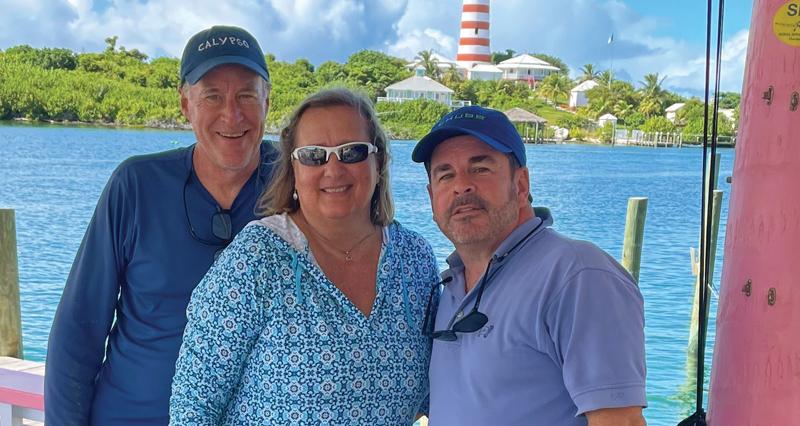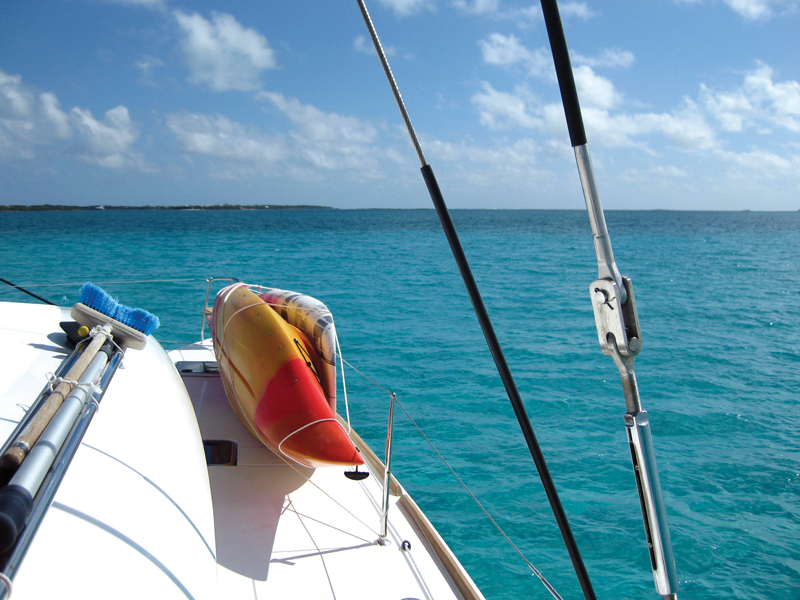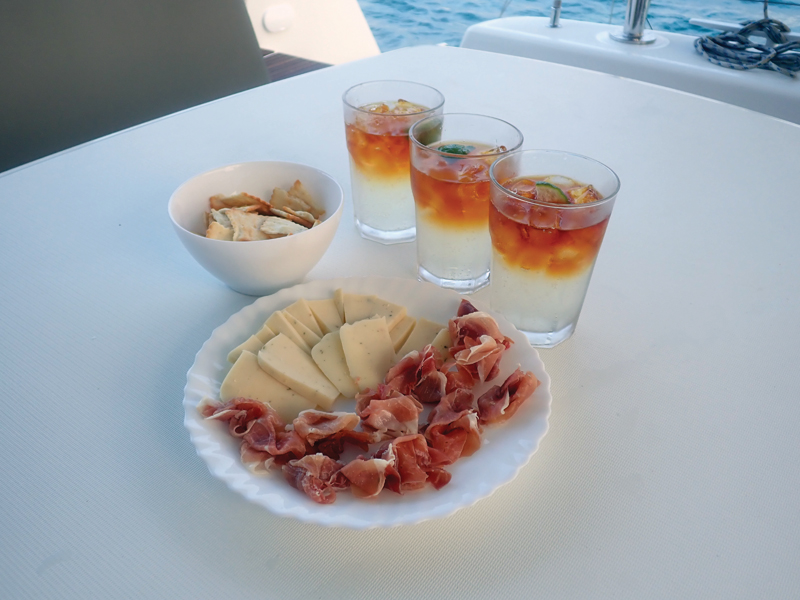When you are dealing with boats, it’s always a compromise.
I’ve heard more than one would-be charter vacationer, attracted by those gorgeous ads and tales of paradise from charter veterans, lament that they could never do a sailing vacation because they get seasick. Inevitably, someone suggests a catamaran charter because no one gets sick on catamaran. Given that most charter fleets favor catamarans over monohulls these days, this is a tantalizing observation.

I’m sorry to be the bearer of bad news, but a catamaran is not the cure. In my experience, cats tend to “hobby-horse” or “seesaw” when going through any sort of sea. Add that tendency to two hulls which may not be taking the seas at the same instant and you’ve got a recipe for sickness. I’ve had veterans of many a voyage hugging the mast (the fulcrum of the seesaw) in misery praying for a passage to end. I’ve made the mistake of reading or preparing food in rough conditions and found myself in similar straits, even though I can mostly do these things on a monohull with impunity.
Of course, the wise skipper can try to avoid rough conditions, either by careful choice of destinations or routes, or planning during calmer seasons. But that’s true of a monohull as well.

Seasickness aside, there is no question that a catamaran can offer a more stable platform for your crew. No one will ever be forced to prepare lunch while the boat is heeled over. Those carefully concocted cocktails have a much better chance of staying put once served. That said, the combination of the way the cupboards in the catamaran galleys are arrayed (typically athwart) and the seesaw motion underway can result in a mess, as dishware or canned goods sliding to and fro have been known to pop the latches and take flight, as happened to me in the Exumas. On our last sail in the Abacos, a dish drying rack slid into the sink, tipping on the faucet on its downward path, resulting in gallons of wasted water all over the galley before we realized it had happened.
The loss of water could have been a real pain, but we avoided pain because our extra large catamaran had push-button water making capability. A boat with 25 feet of beam to 40-45 feet of length provides a lot of space for amenities such as watermakers, air conditioning, generators, extra fridges (one in the cockpit, making the beer run simple!), and ice makers. The extra space allows for luxurious cabins with queen-sized bunks and plenty of light, relatively large galleys, plenty of indoor and outdoor living space, and in some cases, flybridges and cabin roof lounging spaces. (It also means a lot of steps from the cockpit to the helm station, side decks, and upper decks, so careful footing is ever more essential.)

Curiously, all of that extra space isn’t necessarily applicable to storage, so the rules of packing for a charter still apply: there is nowhere to stow a hard suitcase and surprisingly little space to store much more than a basic vacation wardrobe. Our last sail, on a Lagoon 42, left us with virtually no space to stow groceries that weren’t in need of refrigeration. The galley lockers were filled with minimal dishes and cookware, and we ended up stowing most of our non-perishable food on an open shelf with a modest one-inch fiddle. (This made me wish I had brought some sort of folding baskets for portable storage. Next time, perhaps.)
Catamarans are also not known for their sailing performance, though in the right conditions they can fly. This may or may not be a concern for different crews, since a great many charterers find themselves sailing very little, never plan to sail in the first place, or even promise their charter company that they won’t (lacking sailing skills).
All of which goes to prove, once again, that when you are dealing with boats, it’s always a compromise.
by Eva Hill




